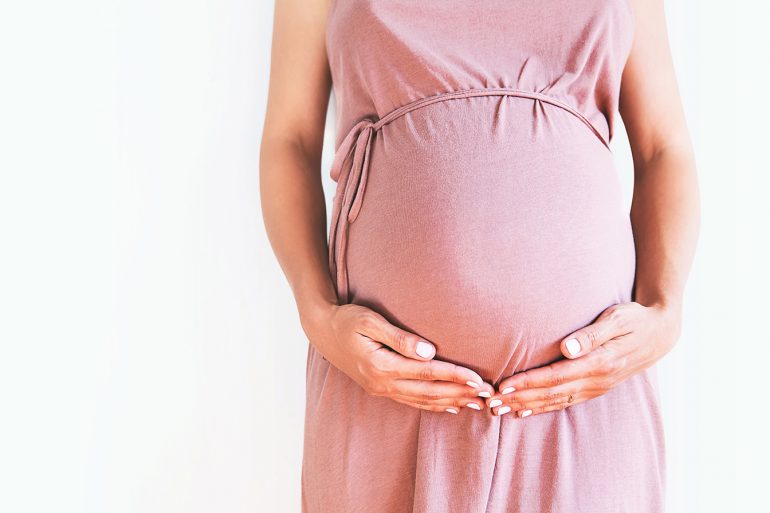The waking temperature of the body changes in women as soon as ovulation occurs due to the corpus luteum hormone progesterone. The body makes the hormone to prepare the uterus for a possible pregnancy. In the first half of a woman’s cycle, from the beginning of her period to ovulation, the temperature is lower than in the second half of her cycle. On the day of ovulation or the day before ovulation, the temperature drops shortly before it rises by 0.2 to 0.5 ° C.
How do I know when I am ovulating based on my basal body temperature?
Anyone who measures and records the basal temperature every day receives a temperature curve and can use the temperature difference visible therein to limit ovulation. The egg can be fertilized for about twelve to 24 hours after ovulation. Since sperm can survive in the female body for five days, women have five to six fertile days per cycle.
According to the NFP (Natural Family Planning) rules, the non-fertile days in the cycle are determined with the temperature in dual control with the cervical mucus or cervix. The symptothermal method is only meaningful after three cycles – the more measurements and the more cycles, the more precisely the fertile window can be narrowed down.
Why should I choose the Ovy Bluetooth basal thermometer?
The Ivy Bluetooth basal thermometer makes the manual transfer of the temperature redundant because the measurement data transfer to an app automatically via Bluetooth. It has a standard measurement time of three minutes. At the end of the measuring time, the temperature value is automatically transferred to the Ovy app. You will be informed about the end of the measurement by vibration or sound alarm. You can activate both signals independently of each other.
Why do I have to measure three minutes?
According to the NFP regulations, a measurement time of three minutes is recommended. Anyone who uses the Ovy app to control conception should adhere to this requirement. Especially women with irregular cycles observe that they get a “more stable” curve with the 3-minute measurement values.
What if I forgot to take a measurement?
Six values before and three days after ovulation are relevant for calculating the fertile phase. Since ovulation can move forward, you should start taking daily measurements on the first day of your cycle, i.e., on the first day of your period. If a measurement is missed, body signals for the day should be entered, and the subsequent measurement should be awaited.
If a measurement is missed around ovulation, no prediction or a delayed prediction of the fertile or infertile phase can be made. If the infertile phase after ovulation has been calculated according to NFP and the evaluation for the cycle is thus concluded, it is not necessary to continue measuring.
Evaluate basal temperature curve: that’s how it works.
Regularly and carefully measuring your basal body temperature is the first step. It is best to record the measurement results directly in a special curve sheet. This is either available when you buy a basal thermometer, or you can print out an online template.
The typical basal temperature curve results from the daily temperature after a month. You can use this to read your ovulation, including your fertile days and possibly pregnancy.
Example basal temperature curve
Here is an example of a basal body temperature curve with 28 cycle days. If you want to measure your basal temperature, the curve can, of course, look different for you. It is crucial to recognize that the body temperature rises by around 0.2 – 0.4 ° C after ovulation and falls again towards the end of the cycle.
Basal temperature curve normal cycle with 28 days
Questions about the basal temperature curve
What is the temperature before the period?
At what basal temperature are you fertile?
At what basal temperature is one pregnant?
What is the basal temperature at ovulation?
Determine ovulation with the basal temperature
If you have ovulated, your body produces the sex hormone progestin. They are only formed when ovulation has preceded them. So if you can measure a slightly increased basal temperature, this is also a relatively reliable indicator that an egg is migrating towards the uterus.
According to the World Health Organization (WHO), the following conditions apply to be able to determine ovulation using the basal temperature:
The basal temperature increases slightly by at least 0.2 ° C (compared to the previous six days) and remains constant for three consecutive days.
When ovulation has occurred, the temperature rise occurs internally ½ of a maximum of 48 hours.
If the basal temperature does not change within a cycle, there was also no ovulation.
You have fertile days around this point: right before the temperature rises to the day when the temperature line rises significantly.: the ovulation calendar
Calculate ovulation
After ovulation, the egg can be fertilized for up to 24 hours. However, sperm can survive in the female body for up to five days. This gives you around five to six fertile days per cycle.
How safe is the basal body temperature measurement?
The temperature method has a Pearl Index of 0.8 to 3. This means that out of 100 women who use this method, up to three of them will still get pregnant. This makes basal body temperature measurement a very safe method of contraception.
However, the Pearl Index only applies if you strictly adhere to the guidelines and only have sexual intercourse in the infertile days after jumping in.
